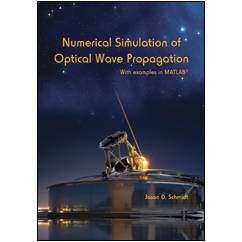|
Dr. Jason Schmidt Appointed Senior Scientist at MZA
2011-09-09 09:25:00
|
MZA is pleased to announce that Dr. Jason Schmidt has recently joined the Technical Staff at MZA as a Senior Scientist in the Dayton, Ohio office. Dr. Schmidt was most recently an Assistant Professor of Electro-Optics at the Air Force Institute of Technology (AFIT). During his time at AFIT, Dr. Schmidt was the primary faculty member in the Department of Electrical and Computer Engineering working in the area of advanced adaptive optics (AO) and laser propagation research. While at AFIT, he successfully advised a total of 11 Masters students and 5 Ph.D. students and was responsible for the AFIT AO Laboratories. Also during this time, but independent from his AFIT duties, Dr. Schmidt authored a book entitled Numerical Simulation of Optical Wave Propagation with Examples in MATLAB which has been published through SPIE Press. Dr. Schmidt's book is available on-line through the SPIE website (discounted for SPIE members) or at Amazon. Prior to his teaching position at AFIT, Dr. Schmidt was stationed at Kirtland Air Force Base where he worked at the Starfire Optical Range, directing satellite tracking tests and analyzing live-test AO system data. Dr. Schmidt holds a B.S. in Physics from Marquette University, M.S. in Physics from The Ohio State University, and Ph.D. in Electro-Optics from the University of Dayton.
From the SPIE website:

Wave-optics simulation is an immensely useful tool for many applications. The simulation techniques in this book are directly applicable to atmospheric imaging, astronomy, adaptive optics, free-space optical communications, and LADAR. In addition, many of the basic techniques are applicable to integrated optics and nonlinear, anisotropic, and optically active media.
Numerical Simulation of Optical Wave Propagation is solely dedicated to wave-optics simulations. The book discusses digital Fourier transforms (FT), FT-based operations, multiple methods of wave-optics simulations, sampling requirements, and simulations in atmospheric turbulence.
This book will benefit optical scientists and engineers at all levels as a guide for FT-based data analysis, imaging system analysis, and wave-optics simulations. Professors can use this book to augment their Fourier optics courses and for independent studies with students. Problem sets are given at the end of each chapter. Students will learn principles and techniques from this book that can be utilized throughout their careers in optics. All readers will also benefit from the use of the MATLAB? scripting language and the provided CD that contains code for the basic tools and examples used throughout the book.
|
|
|